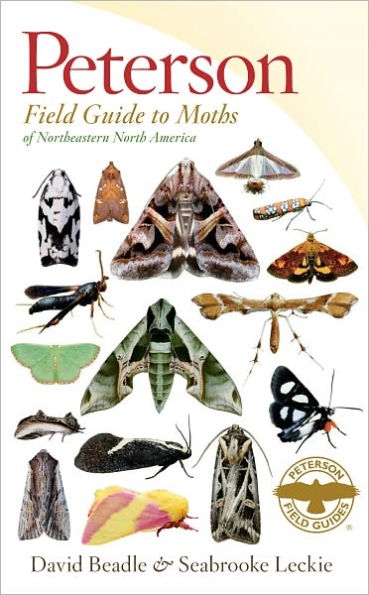There are thousands of moth species in the northeast of North America, and while it might seem that they are all drab grays and browns, there is actually a startling variety. They come in a rainbow of colors, from brilliant oranges and pinks to soft greens and violets. There are moths with colorful leopard-like spots, and ones that look more like B-movie aliens; some that are as large as your hand, and others the size of a grain of rice. With helpful tips on how to attract and identify moths, range maps and season graphs showing when and where to find each species, and clear photographs that use the unique Peterson arrow system for easy identification, this guide provides everything an amateur or experienced moth-watcher needs. Sponsored by the National Wildlife Federation and the Roger Tory Peterson Institute.
There are thousands of moth species in the northeast of North America, and while it might seem that they are all drab grays and browns, there is actually a startling variety. They come in a rainbow of colors, from brilliant oranges and pinks to soft greens and violets. There are moths with colorful leopard-like spots, and ones that look more like B-movie aliens; some that are as large as your hand, and others the size of a grain of rice. With helpful tips on how to attract and identify moths, range maps and season graphs showing when and where to find each species, and clear photographs that use the unique Peterson arrow system for easy identification, this guide provides everything an amateur or experienced moth-watcher needs. Sponsored by the National Wildlife Federation and the Roger Tory Peterson Institute.

Peterson Field Guide to Moths of Northeastern North America
752
Peterson Field Guide to Moths of Northeastern North America
752Related collections and offers

Product Details
| ISBN-13: | 9780547727431 |
|---|---|
| Publisher: | Houghton Mifflin Harcourt |
| Publication date: | 04/17/2012 |
| Series: | Peterson Field Guides |
| Sold by: | Houghton Mifflin Harcourt |
| Format: | eBook |
| Pages: | 752 |
| Sales rank: | 229,263 |
| File size: | 192 MB |
| Note: | This product may take a few minutes to download. |
